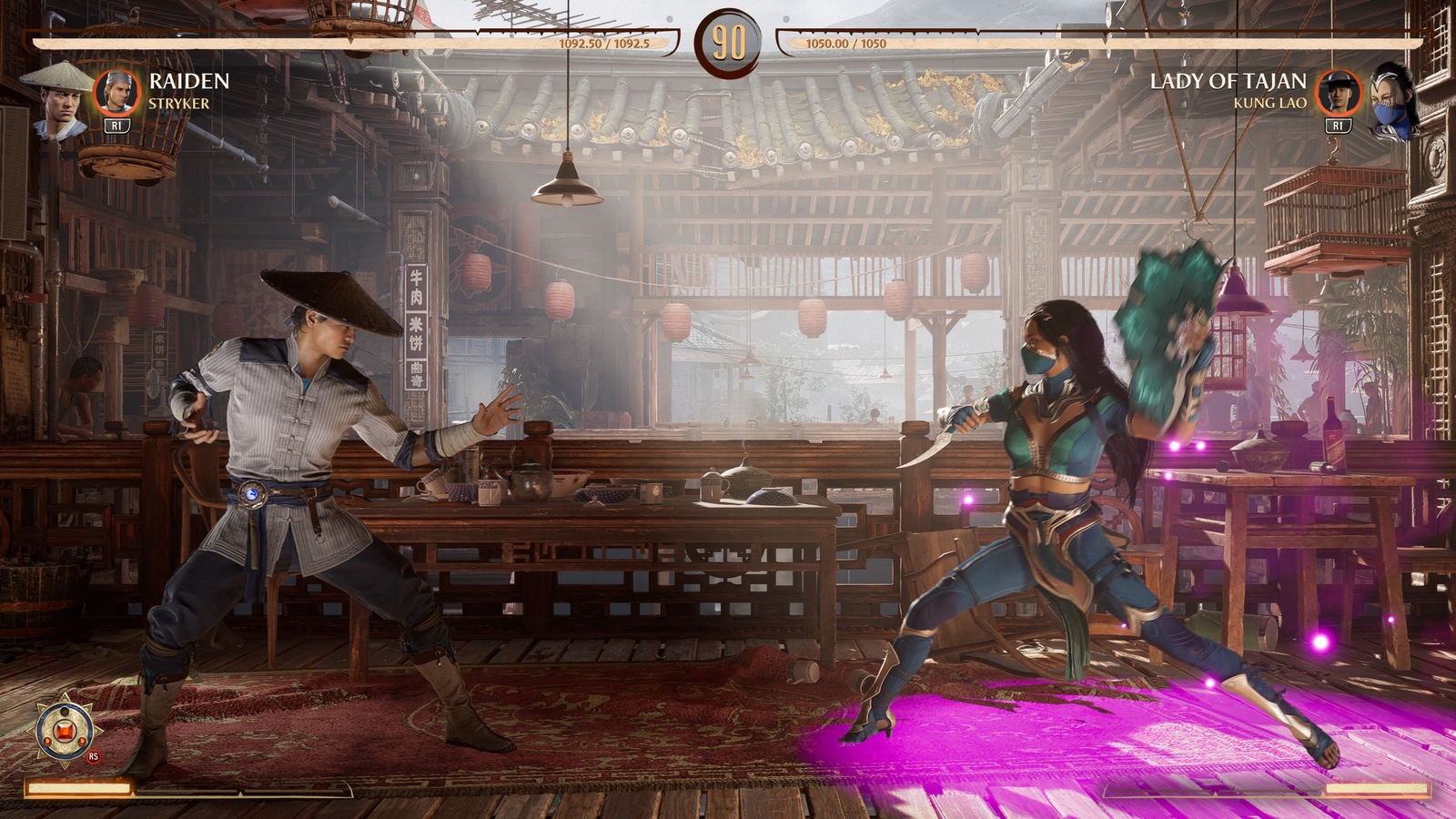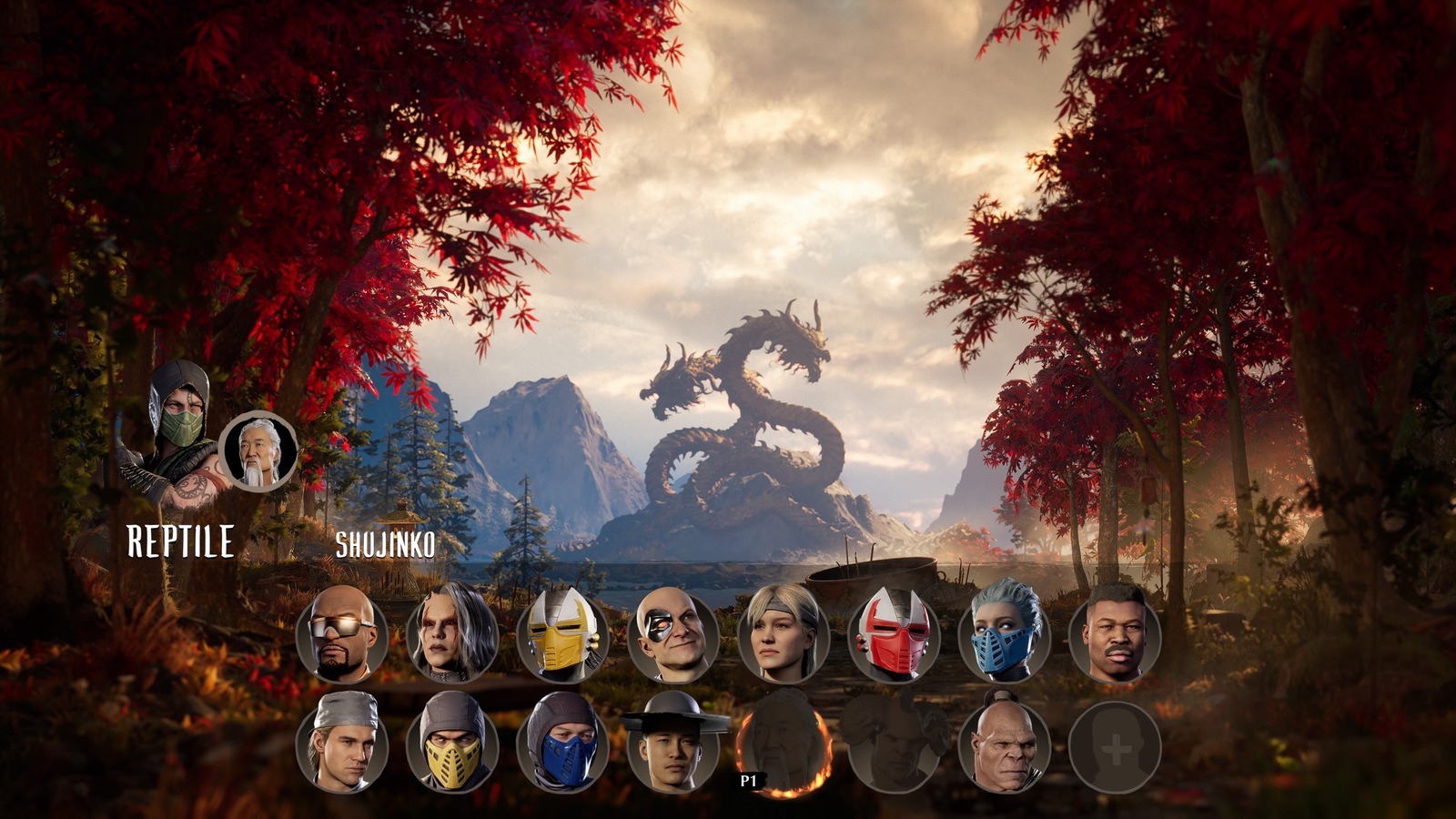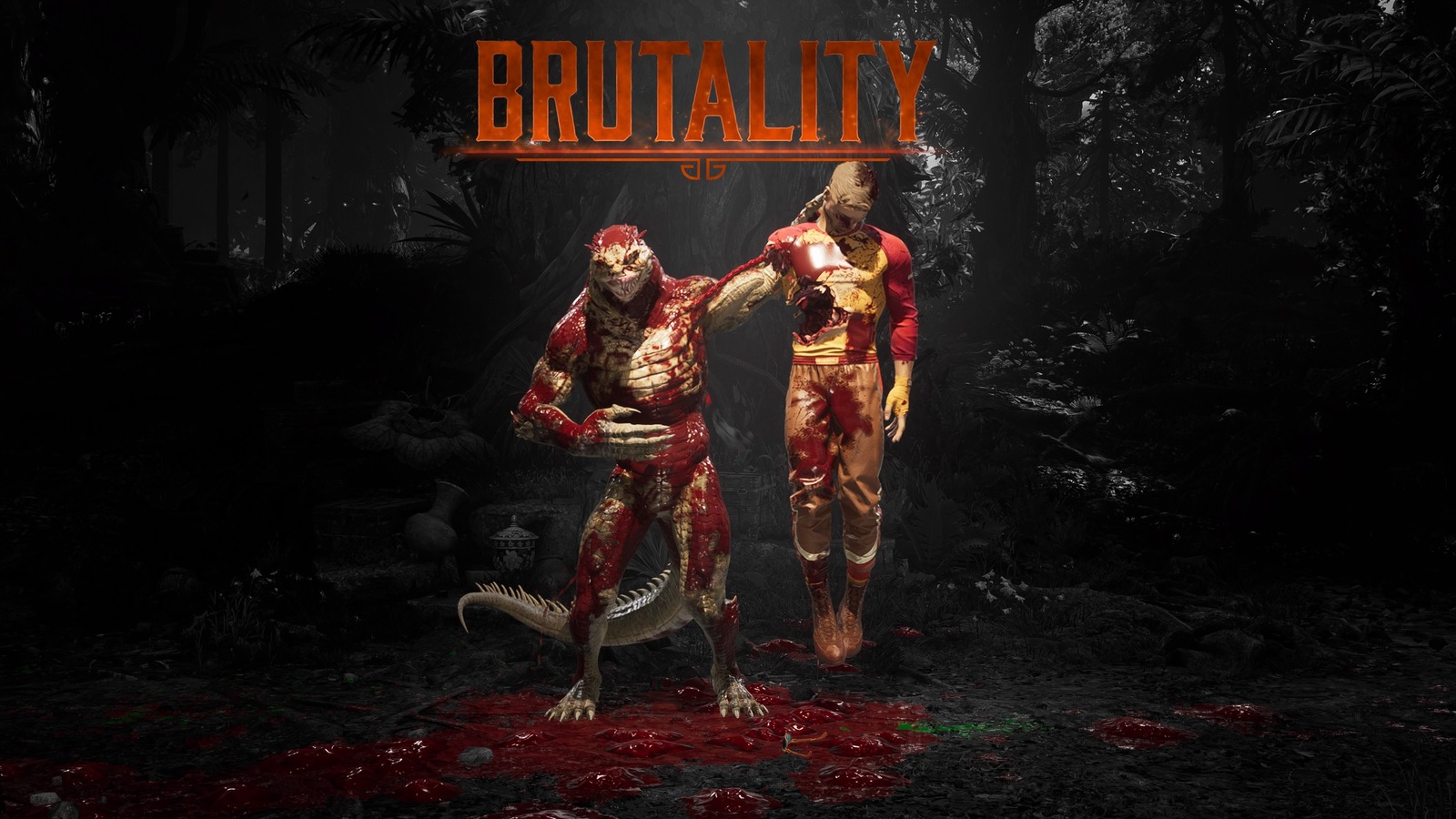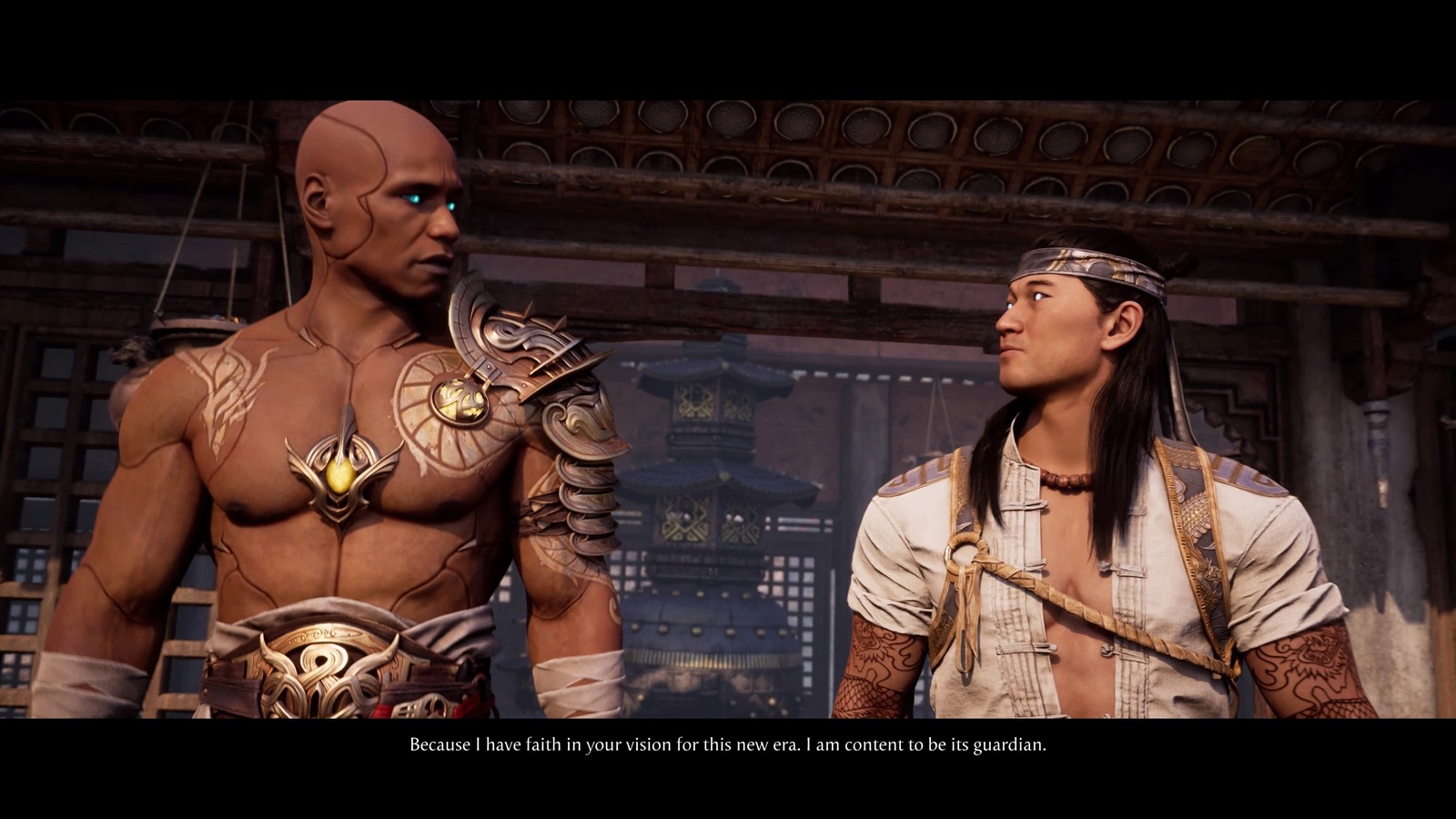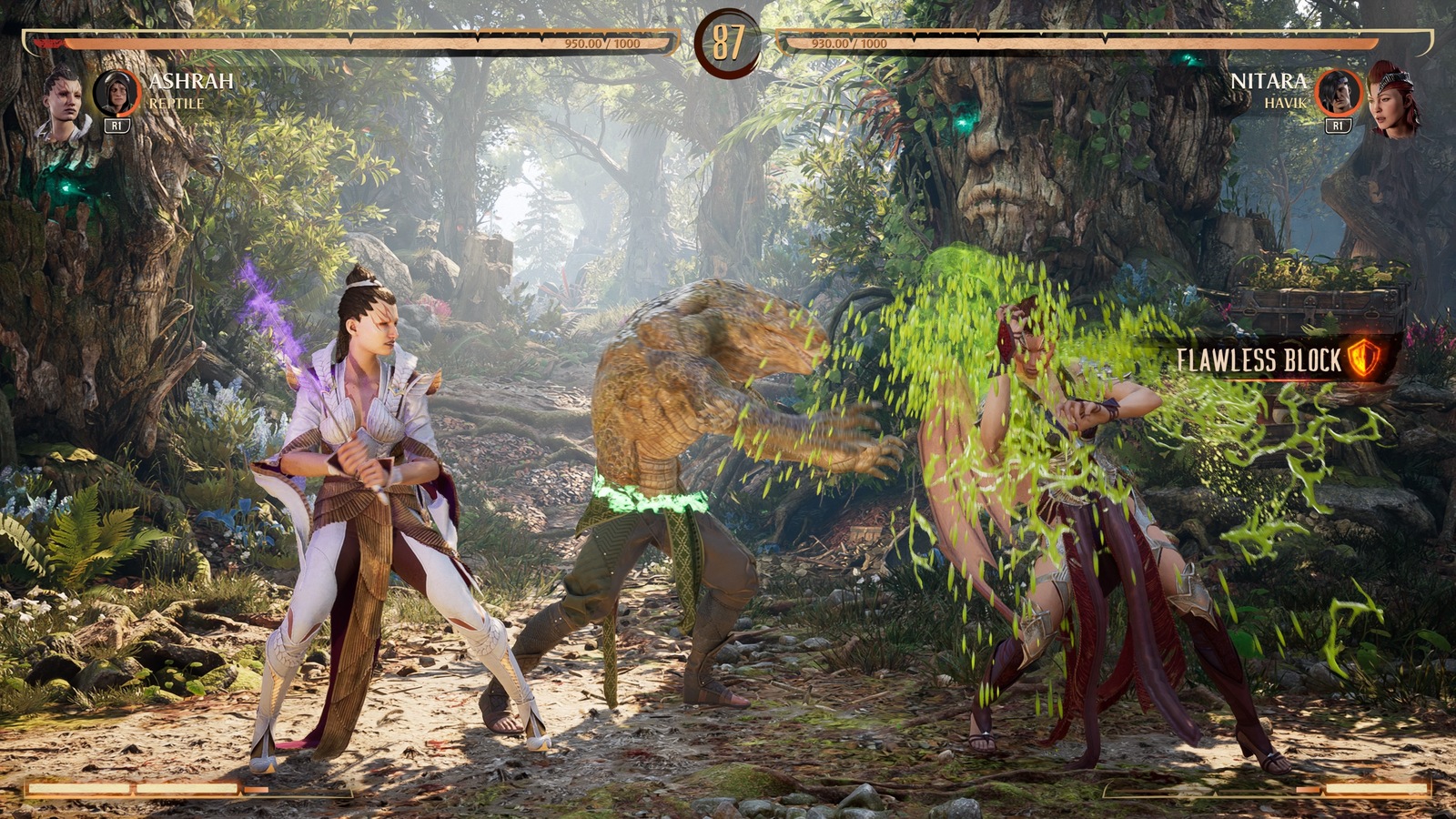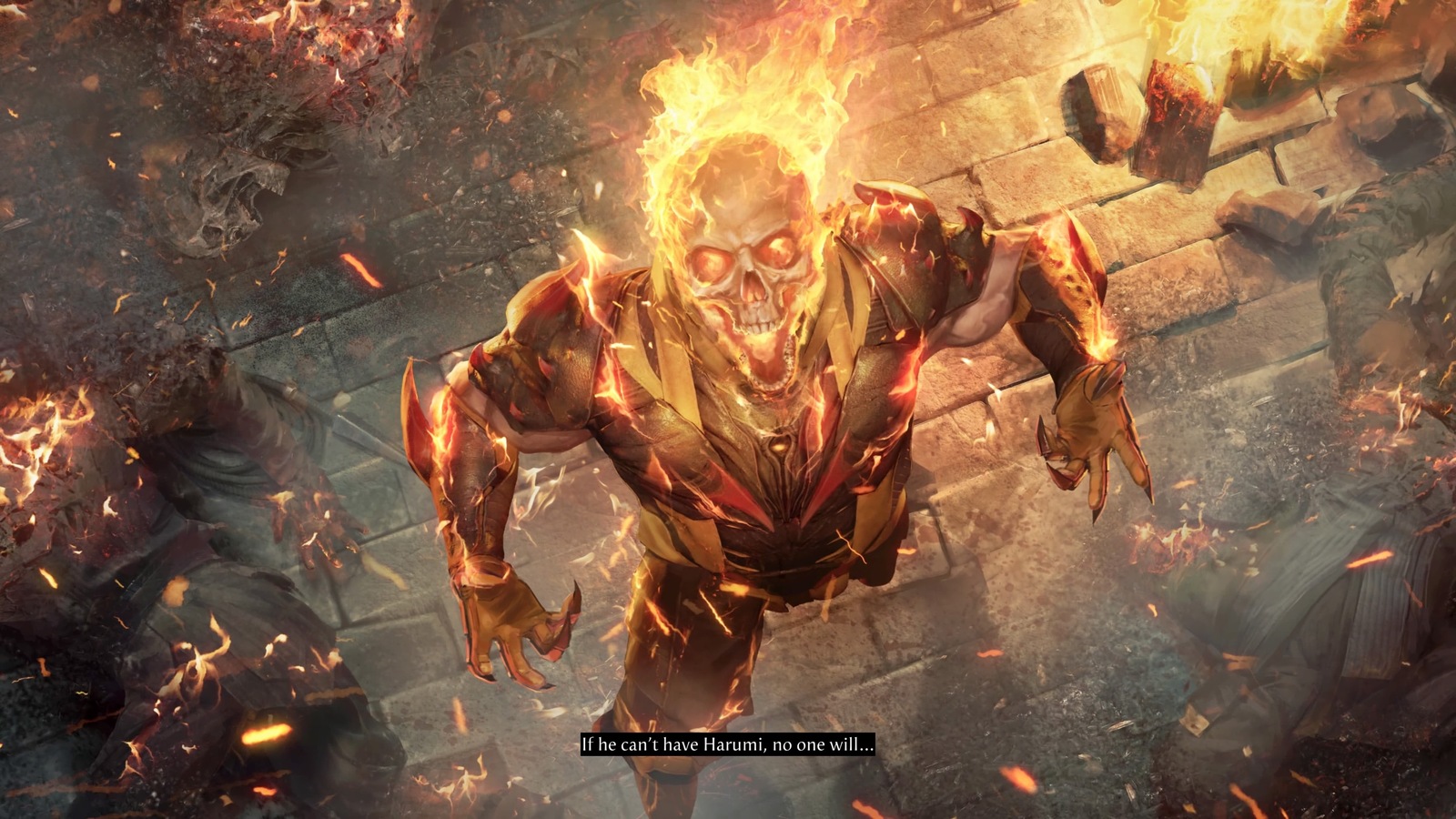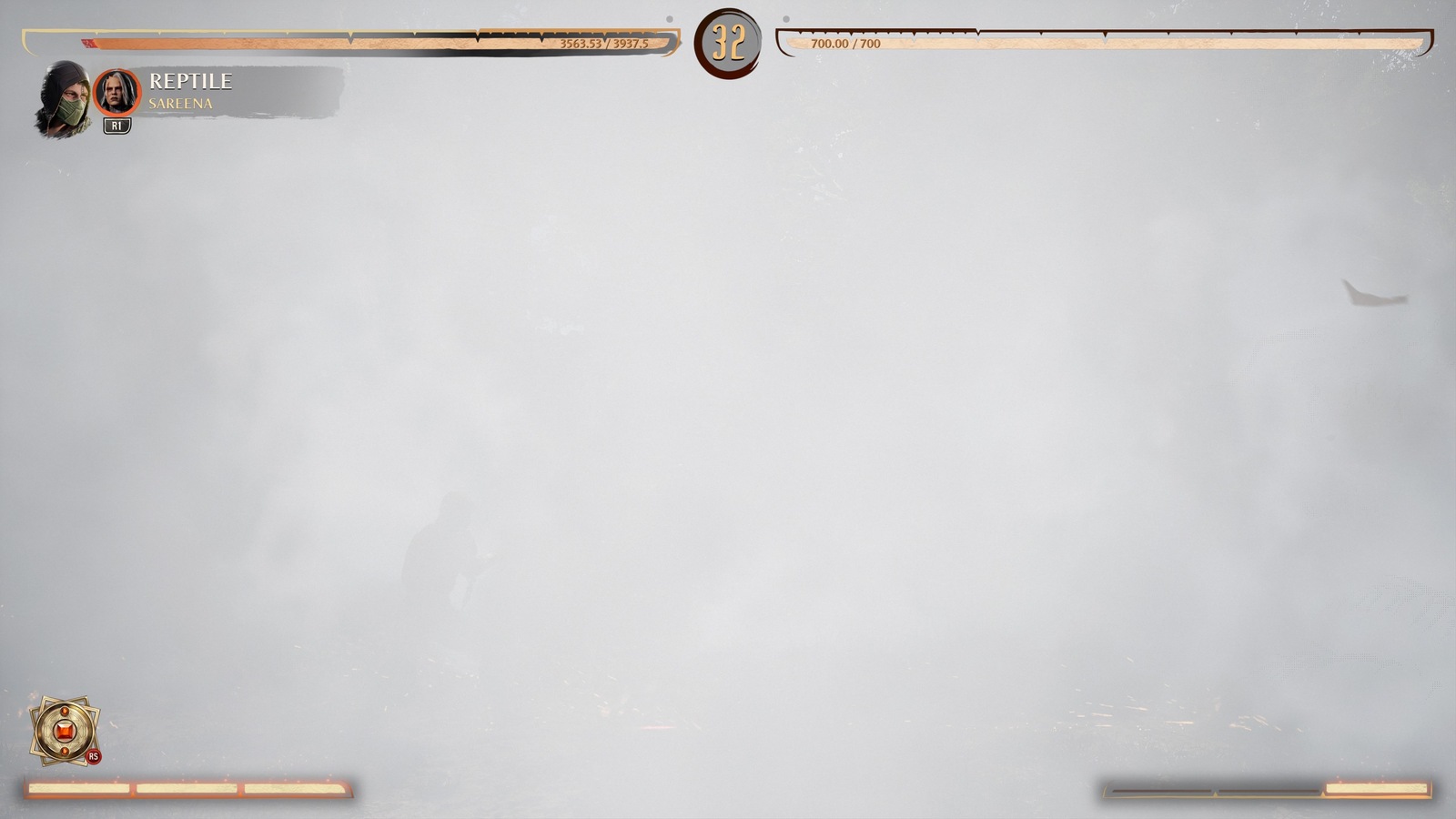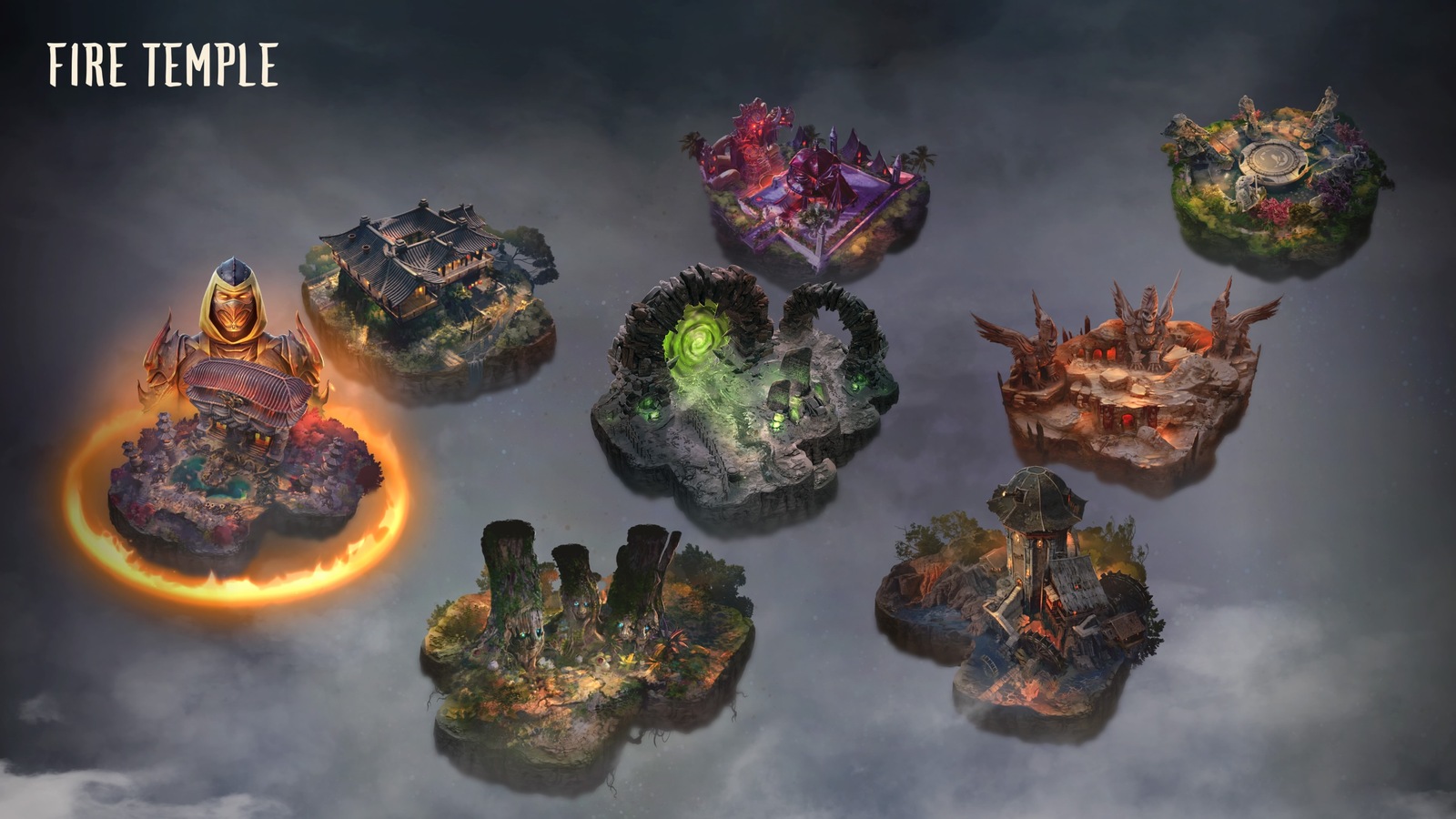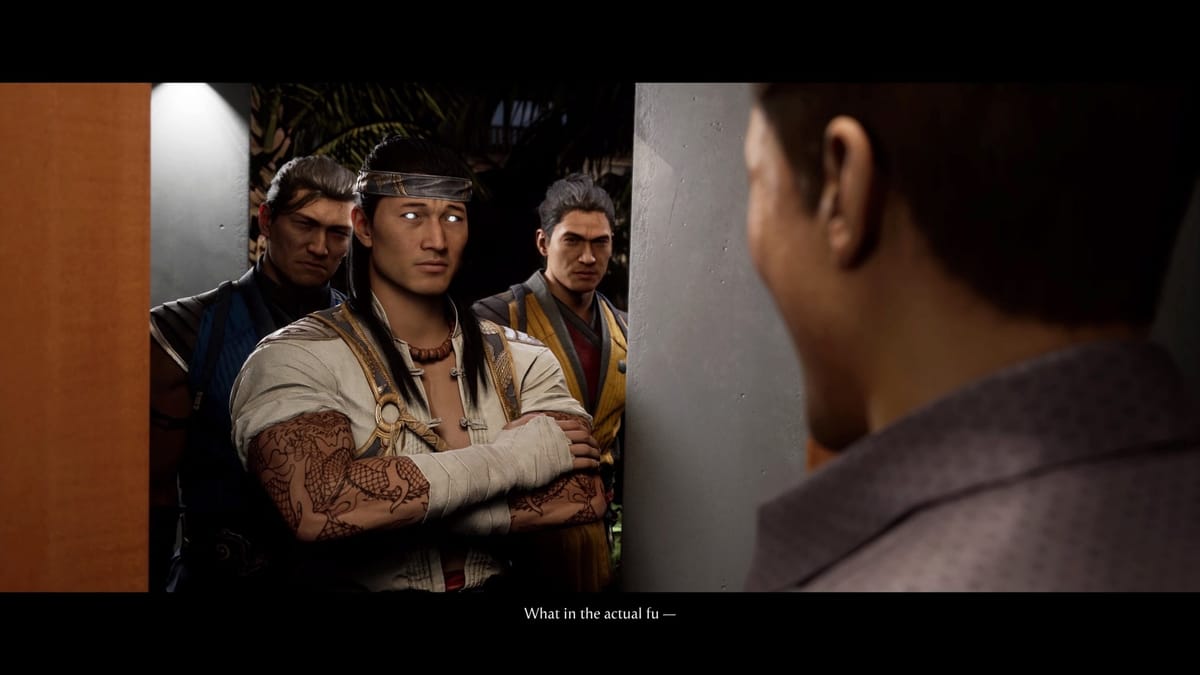
The “1” in Mortal Kombat 1 implies a new beginning. It is technically correct to say that Mortal Kombat 1 reboots the world of Mortal Kombat, kickstarting a new era of the long-running series. However, an unusually large emphasis on the “re” looms over everything that Mortal Kombat 1 risks changing. Rather than taking risks, it may be more accurate to say that Mortal Kombat 1 takes “asterisks.” It makes changes with caveats to how big of a difference those changes truly make. Many of these asterisks emphasize Mortal Kombat’s greatest strengths, but some underlying baggage occasionally forces this relaunch to uncharacteristically pull its punches.
Mortal Kombat 1’s asterisk-y nature appears most prevalently in the fighting mechanics. Despite what you may expect from a reboot, Mortal Kombat 1’s kombat system falls on the more iterative side of the Mortal Kombat spectrum.
Broadly speaking, Mortal Kombat as a series consistently iterates upon its original foundation up until a transition game, then massively reinvents itself, beginning the cycle anew. Both Deadly Alliance (also known as Mortal Kombat 5) and Mortal Kombat 9 (also known as Mortal Kombat, not to be confused with Mortal Kombat, the 1st Mortal Kombat game, not to be confused with Mortal Kombat 1, the 12th Mortal Kombat game) majorly shook up the fighting mechanics and built the base that their sequels would iterate upon. I hesitate to classify Mortal Kombat 1 as a transition game in the vein of Mortal Kombat 4 or Mortal Kombat vs. DC. MK1 clearly builds upon the foundation laid by its immediate predecessors tracing back to MK9.
Everything that defines modern Mortal Kombat, both good and questionable, remains intact in this newest release. If you’re not a fan of Mortal Kombat’s trademark gore, fatalities, dedicated block button, or stiffness in attacks and animations, this game won’t change your mind.
I’m torn on whether or not that is a bad thing. MK9 was released well over a decade ago. If any game were to fundamentally reevaluate Mortal Kombat conventions, it seems as though it should be the one boasting about beginning a new era. Still, Mortal Kombat maintains a distinct style and feel from basically every other fighting game on the market right now. I respect that MK1 sticks to its guns and it would be a shame if it lost too much of its identity in pursuing something else.
MK1’s kombat mechanics prove the strengths of iteration by directly responding to common complaints about MK11’s systems. The “Fatal Blow” system, essentially a super move you could use to help make a comeback, has been toned down to be less prominent in matches. MK11 slowed the pace of fights down significantly – MK1 ramps it back up. Many (but not all) of the fighter’s animations and attacks follow suit with surprisingly fast-paced fluidity. The basic gameplay still feels distinctly like Mortal Kombat, but an energy courses through MK1’s veins that puts a spring in its step.
Kameos represent the most major shift in kombat dynamics. The prior two Mortal Kombat games expanded your options through the Variation system. Variations offered multiple versions of the same character for you to pick from, each with a different loadout of attacks to suit different playstyles. MK1 trades Variations for Kameos, which are partner characters with a separate loadout of attacks to suit different playstyles. If that sounds familiar, that’s because Kameos essentially move the customizability away from the core of your character and into an outside add-on.
On a fundamental level, Kameos convolute the game far less than Variations. Whenever you pick your primary character, you now know exactly what their moves will be – you don’t have to worry about whether or not a particular variation removed something iconic from their moveset. Further, they alter your mindset from a predetermined style of play to something more malleable. It’s a lot easier to change your Kameo to suit your opponent than it is to have to learn what amounts to multiple similar, yet different characters. Kameos enhance how you want to play rather than strictly define it.
Seeing these extra characters run on and off-screen injects chaos and a depth to fights that Mortal Kombat has left relatively unexplored up to this point. Kameos add new layers to your assaults, defensive options, and combo routes. They’re satisfying to use on both a mechanical and especially fanservice level. The roster contains deep cuts ranging from Shujinko to Sareena. I enjoy seeing these relatively unused characters be faithfully brought to life with modern technology even in this relatively limited capacity.
All of the changes to MK1’s fighting system add up to a game worth playing, just one that grounds itself in long-standing fundamentals. It approaches old ideas from new angles rather than shifting the paradigm of Mortal Kombat altogether.
At this point I must reveal to you that Mortal Kombat is more than just the fighting, the blood, and whatever marketing gimmicks they come up with. It is an experience often greater than the sum of its parts. I don’t play Mortal Kombat for the same reasons that I play something like Street Fighter. The gameplay obviously holds some importance, but as long as the fighting system clears basic hurdles of function, fun, and depth, I’m fine with whatever they do. I can easily forgive MK1 for playing things relatively safe with its kombat mechanics because it’s a system that works and MK1’s iteration of it in particular works.
When it comes to the overall experience of Mortal Kombat, however, I get more picky. Mortal Kombat consistently carries with it an overall sense of fun and mystery built by decades of lore. I am perhaps overly invested in seeing how the developers handle my favorite kombatants and where they take the Mortal Kombat universe as a whole. At the end of the last game, the timeline of Mortal Kombat was reset (again). As a result, MK1 gives the entire Mortal Kombat universe a fresh start and a new coat of paint. We are technically meeting MK1’s world and its characters for the first time. With a brand new timeline, the possibilities are endless. Unfortunately, those possibilities are also a little more well-defined than they should be.
I went into MK1 hoping to see a lot of new and interesting ideas. What I found was that this “new era” bears striking resemblance to the old one(s). Details differ, but most of the core characteristics and dynamics of the Mortal Kombat universe appear in some form. MK1 remixes old elements more than it charts a brand new course for the series. That choice allows MK1 to carry forward many of Mortal Kombat’s greatest strengths, but I also can’t help but find its adherence to past conventions disappointing.
Promisingly, this “new era” refocuses the world of Mortal Kombat onto its most interesting elements. To me, Mortal Kombat works best conceptually when it leans into the mysticism. Superpowered ninjas, martial arts masters, evil wizards, and snarling monsters all lean into the mysterious elements that gives Mortal Kombat its staying power.
The past few games attempted to ground the world by making the “normal” people the main characters. Mystery gave way to boring, quippy characters fueled by militaristic technology that effortlessly snuffed the life out of the more intriguing ones. A few of those characters hanging around is fine, but making them the center of the Mortal Kombat universe wastes the overall premise. In MK1, the mundane rightfully moves to the back seat.
In turn, the art direction complements this renewed interest in the fantastical. MK1 pushes MK11’s more vibrant colors to the next level. Many of the character designs are the best looks that the characters have had in decades. Despite the grim nature of Mortal Kombat, the visuals overall convey a striking sense of playfulness and hope. MK1 expertly threads the needle between realism and over-the-top fun that lies at the heart of Mortal Kombat’s identity.
It’s when you take a look at the details of the characters and narrative as a whole that some of the cracks start to show. I don’t mind that the vast majority of the characters keep their iconic elements, because otherwise you’d have to ask what the point of bringing them back at all would be. However, MK1 still needs to change the characters in interesting ways, otherwise the point of the reboot itself comes into question.
Some reinterpretations do a better job of justifying the change than others. Reptile shines as perhaps the single best example of keeping what works about the character while also renewing him in ways that haven’t been done before. Many characters, like Johnny Cage or Kenshi, end up being more or less who they were in previous timelines. A couple of characters, like Tanya or Li Mei, might as well be entirely new characters. Characters like Raiden and Liu Kang essentially swap roles. With both roles still filled, however, it doesn’t actually feel like much has changed at all.
The reboot premise largely comes across as wanting to have your cake and eat it too. It makes changes, but it also doesn’t want to change too much, often to the detriment of the characters. No characters demonstrate that idea better than Mortal Kombat’s most iconic ones, Sub-Zero and Scorpion.
Obviously, the Mortal Kombat team wanted to set these characters up as the rivals they have historically been. To accomplish this, they have oddly chosen to make them brothers with opposing views on how to run their ninja clan. This choice smashes together dynamics between multiple characters from previous timelines beyond just Scorpion and Sub-Zero, without the nuance that those separated out relationships provided. So while MK1’s version of events technically results in a new take on their relationship, it’s familiar and arguably far less interesting than any version that came before.
Although many of MK1’s story changes fall more on the asterisk side of things than real risks, I found myself enjoying the Story Mode. Each chapter of the story follows a different character as cutscenes that push the overall plot forward while laying out each character’s role within it. You watch some movies, fight some rounds against the AI, and move along to the next thing with systematic efficiency.
Mortal Kombat admittedly struck gold with the wider gaming audience with this Story Mode formula, and it’s no surprise to see it back for MK1. I also gotta admit, however, that it lost its potency for me several games back. The MK team has been relying on this structure to tell their stories since MK vs. DC back in 2008, and very little has changed since then. If we count the Injustice games (honorary Mortal Kombat by my estimation), this would make for the 7th Story Mode like this. What was once a novel approach has now been thoroughly worn down.
At this point, the writing and scenario need to carry this type of Story Mode to hold my interest. Both MKX and MK11 were lacking in those departments. MK1, on the other hand, kept me engaged for the vast majority of its runtime.
It helps that the story this time around naturally fits the premise. MK1’s Story Mode succeeds for the same reason that MK9’s Story Mode does. A new timeline means that you want to know all about the new version of these characters. The story thoroughly delivers on that premise.
Unfortunately, you can feel the weight of the post-MK9 stories tug on MK1’s story. MK1 technically reboots things, but beware: this story is still a sequel to Mortal Kombat 11 and everything that entails. The majority of the story introduces and sets up the main players of this new universe well. About 60-70% in, however, events occur that totally derail it in favor of something far less interesting. This swerve leads to things that are fun in their own right, but it comes at the cost of any investment you can have in the direction of this new timeline for the rest of the game. I felt a little robbed, like all of the setup was just for show and this derailment was what the Mortal Kombat team really had in mind for the series as a whole.
Your options for more of MK1’s world outside of the Story Mode are also fairly limited. Interestingly, everything else in the game frames itself as a direct follow-up to the events of the Story Mode. Pre-fight dialogue between characters appears to be set after its events. The Towers Mode, functionally an Arcade-style ladder of matches, contains epilogues for each character that directly follow-up on where the Story Mode left them. While I appreciate the concentrated effort to meaningfully pick up the ball where the story abruptly leaves it, these amount to tiny scraps of information rather than anything you can immerse yourself in.
If you’re primarily interested in Mortal Kombat for the single player, you also won’t likely be spending much time on grabbing that lore. Instead, the Invasions Mode will consume most of your time. The basic premise of Invasions involves warriors from the multiverse invading MK1’s timeline. In order to stop these invaders from mucking things up more than an average Mortal Kombat timeline already mucks itself up, you need to travel across the realms beating them down.
These invasions run in “seasons.” Each season stars a major antagonist that needs to be defeated by reaching the end of the game board representation of the Mortal Kombat universe. As of the time of writing, Scorpion is currently traveling the multiverse in search of a new wife, and he’s struggling to find someone who stacks up. Relatable.
Basically, you spend your time in Invasions Mode running from fight to fight against “multiverse” variations of the existing fighters. While there are some RPG elements in the form of a level up system and an amulet crafting system, it’s honestly pretty mindless. This is a mode you play to chill out and watch numbers go up, as very few enemies will put up a real fight. The only breaks from the routine come from occasional exploration, as sometimes there will be hidden chests or keys to collect. A few chests hide behind barriers that require you to win fights under special conditions to pass. Although the hints for these conditions remind me of old school Mortal Kombat secrets, most are not that difficult to figure out and the rewards are relatively unexciting.
Invasions are fine if unambitious until the “endgame.” Once you clear out the major invader, your next stop is the Gateway Portals, which is filled with an ever-rotating collection of Towers. These Towers refresh hourly, daily, and weekly. You can grind these Towers to your heart’s content until the next season starts, but I struggle to say it’s worth the effort.
Unless the developers crank the enemy AI up to “cheat” mode, there are very few ways that a fighting game AI can genuinely challenge players. The solution that recent Mortal Kombat games have proposed is to add “modifiers” to matches. These modifiers range from random projectiles spawning from the ether, the enemy gaining a “super armor” property that deflects attacks, or messing with your ability to play the game by blacking out the screen or randomizing your controls. For some of these modifiers, you’re either practically or literally mashing buttons in hopes that you’ll win.
The endgame Towers are filled with stupid modifiers and they are obnoxious. I’m frankly shocked by how not fun some of these Towers can be to play. MK11 had a very similar endgame called “Towers of Time” which were filled with encounters that suffered from very similar problems. For a game that clearly takes so much from the past, you’d think it would avoid these pitfalls rather than transfer them over wholeheartedly.
I hit my breaking point while playing the seasonal “Challenge” Tower. This Tower stands eighteen floors high, with most of them being occupied by powerful superbosses stuffed to the brim with modifiers. It took just under an hour, but I finally reached the top after a grueling onslaught of nonsense. My final opponent awaited me: a Test Your Might mini game. If you’re unfamiliar, in these games you need to mash buttons to fill a meter. The trick is that you can only have it filled to a certain point – if you hit the confirm button outside of a specific spot, you instantly fail.
Anyway, I instantly failed. Because I failed the mini game, all of the work I put into getting to that point became null and void. I failed the Tower as a whole and would need to start it over from the beginning. Some may call this Test Your Might placement “expert trolling.” I call it me never bothering to play a “Challenge” Tower ever again.
While that incident frustrated me, it frustrates me less than my real issue with Invasions. Ideally, the Invasion Mode presents a great opportunity to explore MK1’s world from a new perspective. In practice, Invasions barely touches on MK1’s world at all.
For starters, the board game structure lacks character. Each area of Invasions technically takes place in a different locale, yet functionally they are all identical. It makes no difference whether you’re running through Johnny Cage’s mansion or a Tarkatan wasteland. The fights prove largely interchangeable and there aren’t any meaningful variations to the structure of the mode from location to location. You don’t gain any insights to the story or characters through your journey. This entire mode exists purely as a gameplay contrivance.
More importantly, the multiverse premise actively prevents you from learning anything interesting at all. The “Scorpion” I mentioned earlier has no bearing on the Scorpion of MK1 or any Scorpion prior to MK1. He’s essentially just some guy. I sympathize with his plight, but this Scorpion does not matter. None of this multiverse stuff matters, yet no meaningful story content exists to pick up the slack. Although MK11 followed a similar blueprint, it at least had a very involved Krypt mode that did a lot to immerse you in Mortal Kombat’s world. MK1 sadly offers nothing like that.
When I think back to when I was a child, way too young to be playing Mortal Kombat yet playing it anyway, it wasn’t the blood that captured my imagination. It was the ethereal sense of scale that these games exuded. The characters, the secrets, and the little details all filled my mind like a well. Within that well was a nearly endless amount of mysteries to draw from. The world of Mortal Kombat felt big. When Mortal Kombat Deception was released, it had a Konquest Mode that made that world tangible, yet just as mysterious I imagined it. It made the world of Mortal Kombat even bigger. Ever since then, it feels like Mortal Kombat moved away from expanding its scope to continually reinterpreting it.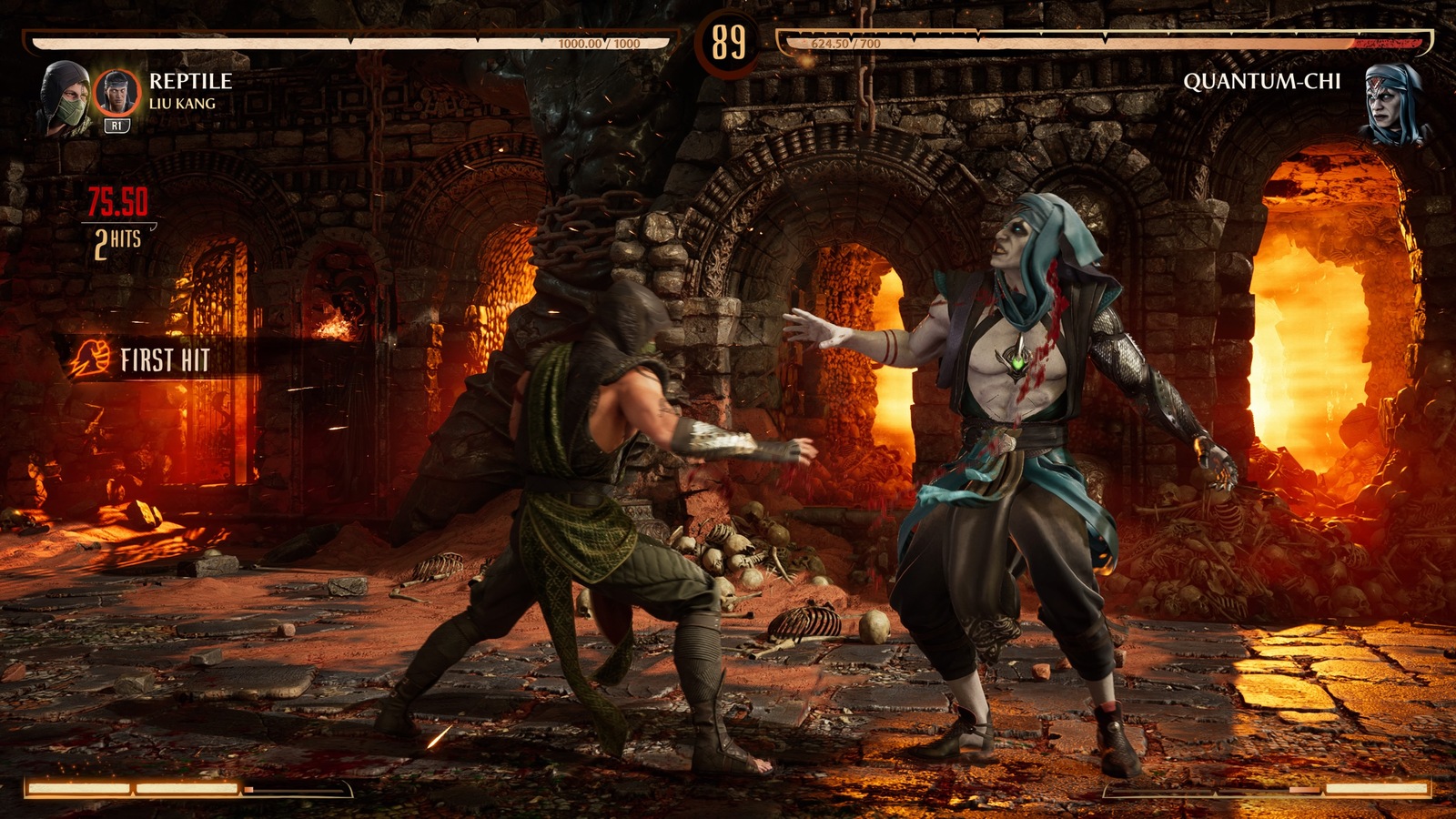
Multiple timelines and dimensions, at least in the ways they tend to be done, make Mortal Kombat’s world feel small. The multiverse opens up endless possibilities…as long as those possibilities fit within predefined frameworks and limitations. Mysteries fail to be mysterious when there are infinite equally valid answers to the same question. What if your favorite character was evil? What if Kenshi wore different clothes? What if Sub-Zero was a girl? No, I’m not talking about Frost! All of these possibilities sound new, yet stem from things that already exist. If your endless possibilities simply remix old ideas, it insulates your world and suggests it can do little except endlessly repeat. That’s not a good direction for Mortal Kombat, and I desperately hope that it moves away from simply refreshing concepts sooner rather than later.
Reverence for the past isn’t a bad thing. It can guide you towards the best version of yourself. MK1 expertly demonstrates that. It contains so many elements that I love about Mortal Kombat. I love the respect that they are giving to the 3D era of games in particular. However, Mortal Kombat can’t just be about respect. The “new era” needs to do new things, so I’m hopeful that in the future Mortal Kombat starts taking more risks than asterisks.
Mortal Kombat 1
Great
Mortal Kombat’s “new era” takes more from the old ones than the reboot implies. While this allows Mortal Kombat 1 to bring the best elements of the series to the forefront, it also distracts from what should be a bold new beginning.
Pros
- Fiercer and more fluid fighting mechanics
- New timeline emphasizes the best of MK’s setting
- Wonderful art direction
- Reptile is cool in this one
Cons
- Takes more asterisks than risks
- Invasions Mode disappoints
- Story derails from its opening premise

